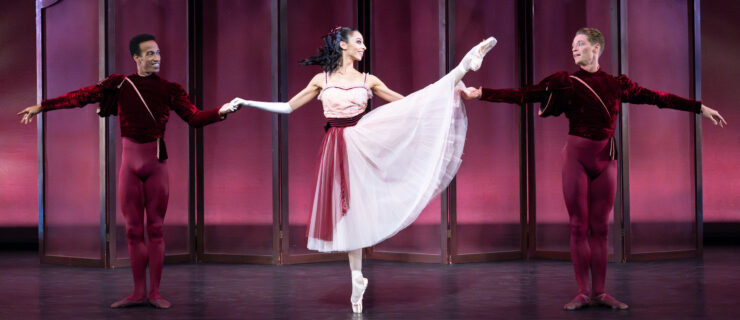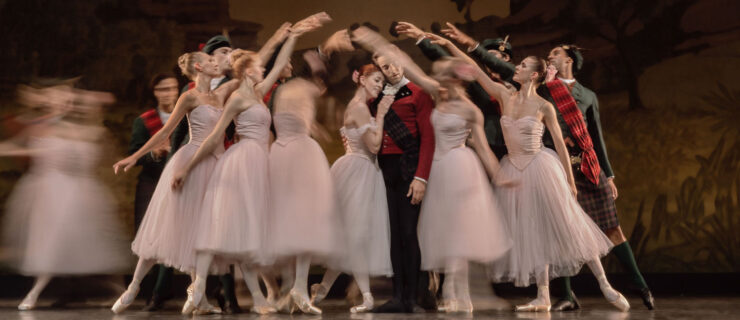Fund Your Summer Intensive
When Pacific Northwest Ballet School student Madison Abeo was accepted into San Francisco Ballet School’s summer session on a partial scholarship, she was thrilled. But then she added up the remaining cost for the program and realized she didn’t have the funds. “I really wanted to go,” she says, “but we just couldn’t make the other half of it work.”
Ballet training is expensive. For many families, a trip to a dream summer intensive simply isn’t in the budget. SFB was $2,500 out of Abeo’s reach. But she was determined. At the suggestion of her aunt, Abeo created a Facebook fan page where she asked for opportunities to babysit or perform odd jobs, and included a link to a PayPal account where friends and family could make donations. Two local dancewear businesses, Vala Dancewear and Class Act Tutu, offered to outfit her for fundraising photos, which a photographer took for her Facebook page for free. By June, Abeo had raised enough for tuition—plus plenty of pointe shoes.
Affording your dream intensive isn’t as difficult as you might think. There are a surprising number of eager dance supporters out there. Case in point: On Kickstarter, dance projects have the highest success rate of any type of campaign, with dancers receiving over $4 million in donations through the site since it began. You can also apply for need- or merit-based grants and scholarships, either through your summer program or an outside foundation. Most dancers who want it badly enough can make it happen.
Take Your Cause to the (Online) Streets
The concept of crowdfunding, or accumulating donations from many small sponsors, isn’t new, but the internet has revolutionized its potential. While the most famous site, Kickstarter, is meant for groups and specific projects, sites like Indiegogo, GoFundMe and RocketHub allow individuals to launch campaigns for almost anything.
To crowdfund your summer, sign up on a site, set a funding goal and deadline and write a personal statement. (Most sites include tutorials on how to use their particular setup most effectively.) On some sites, you must reach your goal to receive any of the money your supporters have pledged, but on most, the donated funds are deposited directly into your bank account regardless of whether you meet your goal.
Showing your personality on your donation profile is key. Upload photos and maybe even a video about your summer goals. Most of all, show your gratitude. Offer something to sponsors in return for their donations, such as a weekly update email about your experience at the intensive. If you’re hesitant to ask for donations, ask for jobs like Abeo did. And don’t be afraid to tell everyone you know about your page, both through social media and in person. Ultimately, Abeo says that the majority of her funding came from people she knew.
Scholarship student Lily Blazevic, level 6 with Sabrina Lenzi, Instructor.
Photo by Cameron Durham, courtesy of Houston Ballet
Find Free Money (It’s Out There)
A number of foundations offer need- and merit-based scholarships that can be applied to any summer intensive. The Dance Council of North Texas, for example, offers more than 20 scholarships for summer intensives that are available to dancers anywhere in the country. Each month, the American Harlequin Corporation offers a $250 scholarship to four dancers who post their performance videos on its website. (See sidebar on page 108 for a list of opportunities.) Just be sure to check the application deadlines early—many fall in February and March.
To increase your chances of winning a grant or general scholarship, you should also look for local foundations and donors who support young artists. Metropolitan Ballet Academy student Sophie Lane, for example, attended Central Pennsylvania Youth Ballet’s summer program on a full scholarship awarded by the local nonprofit Philadelphia Dance Access in 2011. Last summer she received free housing for American Ballet Theatre’s summer intensive through a New York City family who sponsors MBA students each summer. Check with the director and teachers at your home studio to see what opportunities they know about in your community.
Go Straight to the Source
In some cases, your chosen summer intensive can play a key role in your funding campaign. Some schools offer need-based financial aid you can apply for if your family qualifies. But almost every program also offers merit scholarships, which any student with enough talent can win. For these, schools look for more than killer technique—you must show that you’re a good investment. “When we pay a student’s tuition, it’s because we are looking at them long-term,” says Shelly Power, academy director at Houston Ballet Academy. Schools typically offer merit scholarships to dancers who show potential to be a good fit for their school, or even their company, in the future.
One of the best ways to increase your chances of earning a scholarship, according to Power, is to build a relationship with teachers and administrators. If the school is new to you, consider visiting and meeting them. “It shows a reciprocal interest,” says Power. Later at the audition, the administrators will remember you, and if you are a contender for a scholarship, that extra commitment might be what raises you to the top of the list.
Returning to an intensive where you’ve already had a great experience also increases your chances of earning a scholarship—and can boost the amount of that scholarship. “We invest slowly in students, to make sure they like it here as well,” says Power.
Some schools, like Canada’s National Ballet School, take a personal interest in helping students with their fundraising. Although NBS does not offer merit scholarships and first-time students are not eligible for summer financial aid, it provides fundraising models and ideas to students who request them, as well as written endorsements that students can share on their websites or in community newsletters. “We are certainly happy to provide letters of support that say, ‘This is a young person that we really believe deserves this opportunity,'” says Mavis Staines, artistic director of NBS. Just last summer, the school had several students who initially thought that they could not afford the program, but by getting creative—such as asking family and friends to donate unused air miles or hosting community garage sales—they were able to attend.
Staines’ suggestion? “Pursue the program that you’re most excited about, and then money challenges generally can be worked out,” she says. “It’s amazing how creatively we can get through constraints.”
It’s About More Than Technique…
When schools decide whom to award merit scholarships to, they consider a number of factors beyond technique. Here are three that can have a major impact on your chances at an audition.
Appearance:
Studies show that people subconsciously form opinions about others within seven seconds of first seeing them. This means you must make a great impression before you even start dancing! A neat, secure hairstyle and a clean-cut, attractive leotard demonstrate respect for the school and a readiness to learn.
If 90 percent of the dancers are in black leotards, don’t wear neon. “People think it gets noticed—and it does, but not for the right reasons,” says Melissa Bowman, assistant principal at the Jacqueline Kennedy Onassis School at American Ballet Theatre. Don’t wear eye-catching clothes that could make you look like you’re desperate for attention—and possibly a troublemaker in the classroom. Bring extra supplies in your dance bag so you can change into a different look if necessary.
Responsibility:
Bowman sees a surprising number of students at January auditions who have fallen out of shape over the winter break, which leads auditioners to wonder if the student will fall out of shape again before the intensive. Yawning or looking tired can make the adjudicators wonder if you’ll be able to handle five weeks at the school. Arrive alert and in shape to show that you’re ready to take on any challenge.
Personality:
Auditioners look for students who are excited, eager to learn and happy to be at the audition. From the moment you step in the building, smile and be friendly with the audition organizers (you never know how much power they may have). “After you’ve seen so many dancers, your eye goes right to the dancer who listens. She’s someone we want to work with,” says Bowman. Once you reach the dance floor, show that you’re more than a technician—you’re an artist. Shelly Power, academy director at Houston Ballet Academy, says, “Students with that sparkle in their eyes, that deep involvement in their classwork—those people are going to rise to the top first.” —AR
Win a Scholarship!
These opportunities offer money that can be applied to almost any summer intensive.
Costume Gallery
Beverly Miller Scholarship: $500–$1,000
Number awarded: 19
Contact: [email protected]
costumegallery.net
Dance Council of North Texas
Natalie Skelton Scholarship: $1,000–$5,000
Number awarded: 1
Nathalie Krassovska Memorial Ballet Scholarship: $500–$1,000
Number awarded: 1
Contact: Pam Deslorieux,
[email protected]
thedancecouncil.org
Eurotard Dancewear
Annual Performing Arts Scholarship: $250–$500
Number awarded: 13
Contact: Mia Holtzman,
[email protected]
eurotard.com/scholarships.html
Harlequin Floors
Monthly Scholarship Video Contest: $250–$500
Number awarded: 4 per month
Contact: Karla Johnson,
[email protected]
theworlddances.com
Jessica Karrat Dance Scholarship Fund
Jessica Karrat Dance Scholarship: $500
Number awarded: A minimum of 1
Contact: Barb Klinger,
[email protected]
jkdance.org
National YoungArts Foundation
YoungArts Award: Up to $10,000
Number awarded: Up to 700
Contact: Donna Lane Downey,
[email protected]
youngarts.org





